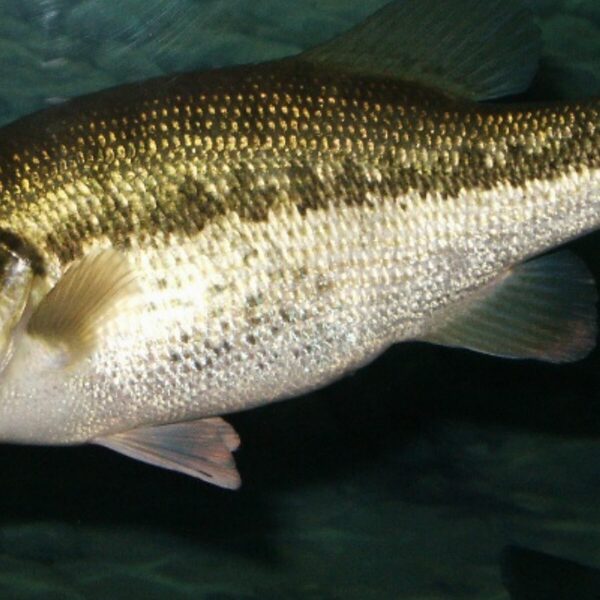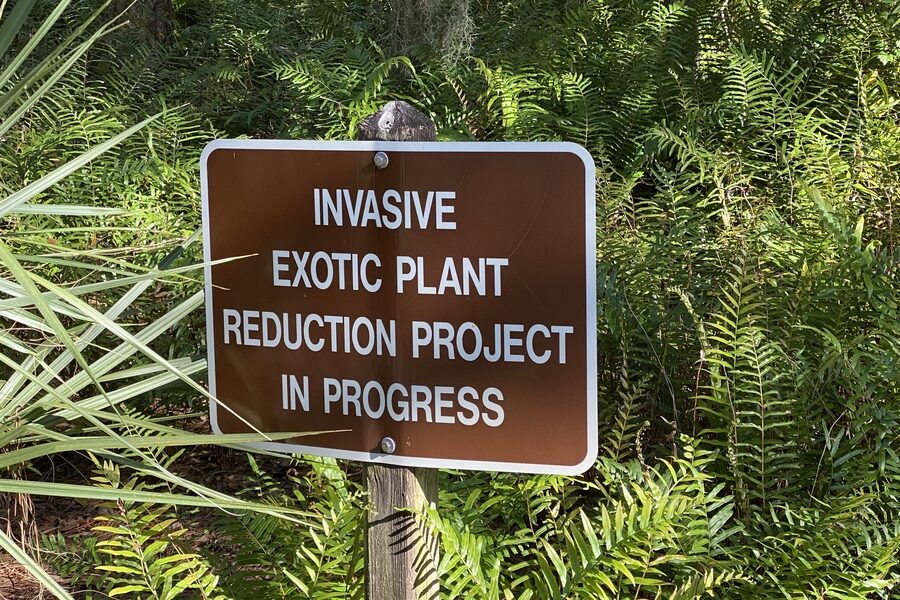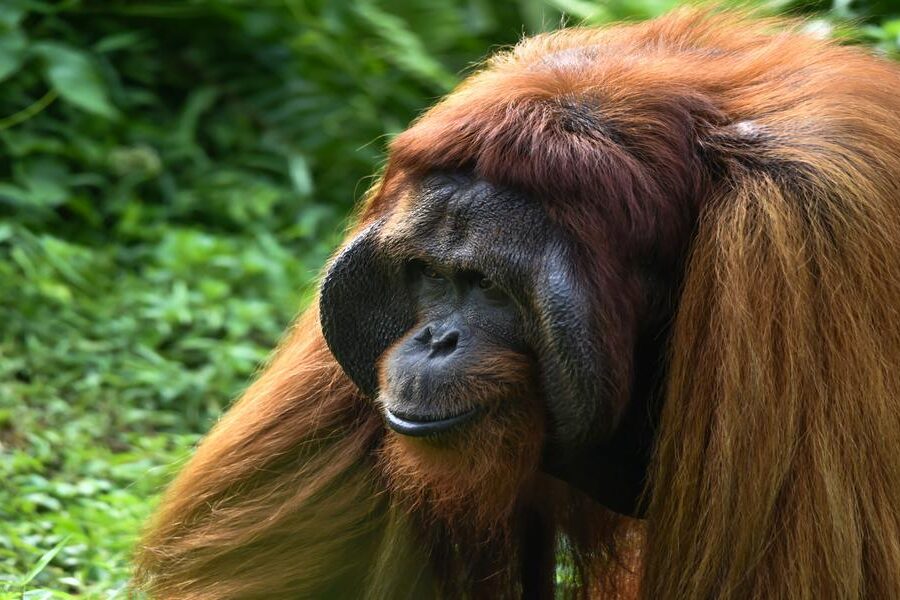Antigua and Barbuda’s islands combine coastal mangroves, dry shrublands, and pockets of forest that shape which mammals live there and how they move between habitats. Observing this mix helps explain why some species are common while others are rare or transient.
There are 27 Mammals of Antigua and Barbuda, ranging from the Antillean Fruit-eating Bat to the Wild Boar. For each species you’ll find below the Scientific name, IUCN status, and Nativity & habitat, presented so you can quickly see conservation status and whether a mammal is native, introduced, or occasional — you’ll find below.
Are any of these species at risk of extinction in Antigua and Barbuda?
Yes — several island mammals face pressures from habitat loss, invasive species, and limited ranges; some show threatened IUCN listings while others are of least concern. Check the IUCN status column in the list for current assessments and look at Nativity & habitat to gauge local vulnerability.
Should I be concerned about non-native mammals like the Wild Boar?
Introduced mammals such as Wild Boar can damage vegetation, compete with natives, and alter habitats. Management varies by island and species; the list notes nativity so you can identify introduced species and learn where they occur and why they may be problematic.
Mammals of Antigua and Barbuda
| Common name | Scientific name | IUCN status | Nativity & habitat |
|---|---|---|---|
| Jamaican Fruit Bat | Artibeus jamaicensis | LC | Native; forests, caves, gardens, buildings |
| Velvety Free-tailed Bat | Molossus molossus | LC | Native; roosts in buildings and hollow trees |
| Brazilian Free-tailed Bat | Tadarida brasiliensis | LC | Native; roosts in caves and man-made structures |
| Antillean Fruit-eating Bat | Brachyphylla cavernarum | LC | Native; caves and dark, quiet structures |
| Greater Bulldog Bat | Noctilio leporinus | LC | Native; coastal areas, mangroves, near fresh water |
| Insular Single-leaf Bat | Monophyllus plethodon | LC | Native; forests and caves |
| Lesser Antillean Tree Bat | Ardops annectens | LC | Native; moist forests and wooded areas |
| Thomas’s Yellow-shouldered Bat | Sturnira thomasi | NT | Native; montane forests |
| Black Rat | Rattus rattus | LC | Introduced; highly adaptable, human settlements |
| Brown Rat | Rattus norvegicus | LC | Introduced; urban areas, agricultural lands |
| House Mouse | Mus musculus | LC | Introduced; primarily in and around human buildings |
| Red-rumped Agouti | Dasyprocta leporina | LC | Introduced; forests, thickets, and gardens |
| Small Indian Mongoose | Herpestes javanicus | LC | Introduced; diverse habitats, from forests to grasslands |
| Feral Goat | Capra hircus | LC | Introduced; dry scrubland, rocky hillsides |
| Feral Donkey | Equus asinus | LC | Introduced; scrublands, open areas, especially on Barbuda |
| Wild Boar | Sus scrofa | LC | Introduced; forests, wetlands, agricultural areas |
| West Indian Manatee | Trichechus manatus | VU | Vagrant; shallow coastal waters, seagrass beds |
| Humpback Whale | Megaptera novaeangliae | LC | Native visitor; coastal and offshore waters |
| Sperm Whale | Physeter macrocephalus | VU | Native visitor; deep offshore waters |
| Bryde’s Whale | Balaenoptera edeni | LC | Native; warm offshore and coastal waters |
| Common Bottlenose Dolphin | Tursiops truncatus | LC | Native; coastal and offshore waters |
| Atlantic Spotted Dolphin | Stenella frontalis | LC | Native; offshore tropical and temperate waters |
| Spinner Dolphin | Stenella longirostris | LC | Native; deep offshore waters |
| Short-finned Pilot Whale | Globicephala macrorhynchus | LC | Native; deep offshore waters |
| Risso’s Dolphin | Grampus griseus | LC | Native; deep offshore waters, continental slope |
| Clymene Dolphin | Stenella clymene | LC | Native; deep offshore tropical waters |
| Orca | Orcinus orca | DD | Vagrant; offshore waters |
Images and Descriptions
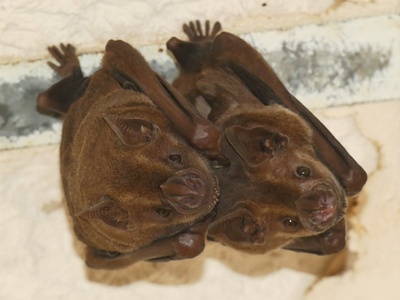
Jamaican Fruit Bat
A common, medium-sized bat crucial for seed dispersal. Often heard rustling in fruit trees at night, it roosts in large colonies in caves, foliage, and sometimes man-made structures.
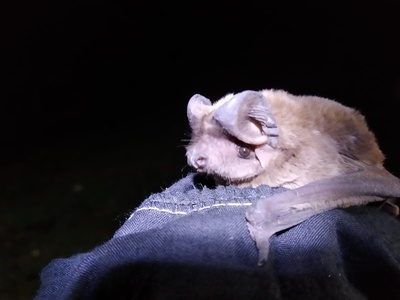
Velvety Free-tailed Bat
A small, fast-flying insectivorous bat. It’s one of the most common bats seen at dusk, emerging from roof eaves in large numbers to hunt insects across the islands.
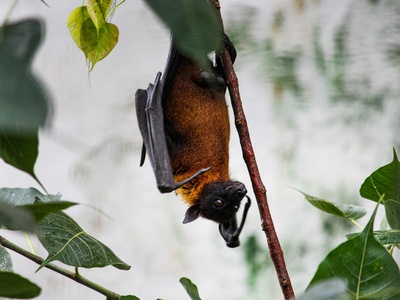
Brazilian Free-tailed Bat
Famous for forming huge colonies, this fast, high-flying bat is a voracious insect eater. It can be identified by its “free tail” which extends well beyond the tail membrane.
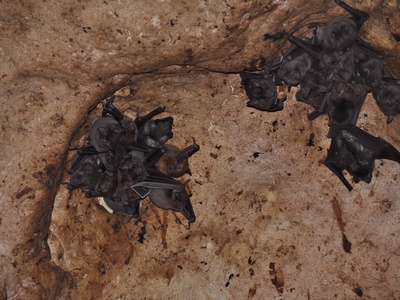
Antillean Fruit-eating Bat
A large, robust bat with a distinctive dog-like face. It feeds on a mix of fruit, pollen, nectar, and insects, and forms large, noisy colonies in dark caves.
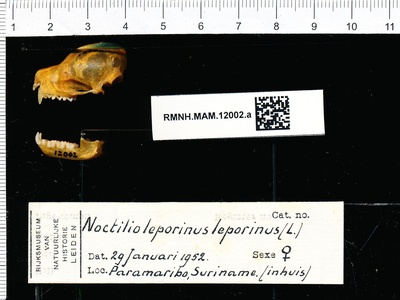
Greater Bulldog Bat
Also known as the Fisherman Bat, this large, spectacular bat uses echolocation to detect ripples and catch fish with its long, sharp claws. Often seen skimming over water at night.
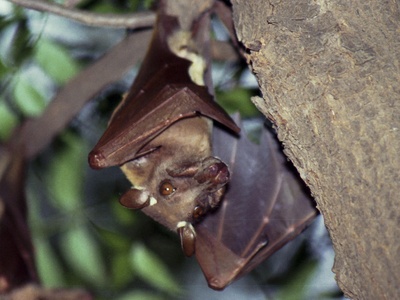
Insular Single-leaf Bat
A small nectar-feeding bat with a long tongue for reaching into flowers, making it an important pollinator. It has a simple, spear-like noseleaf and roosts in caves.

Lesser Antillean Tree Bat
A medium-sized fruit bat endemic to the Lesser Antilles. It typically roosts solitarily in trees rather than in caves, making it more difficult to spot than other species.

Thomas’s Yellow-shouldered Bat
A rare nectar- and fruit-eating bat endemic to the Lesser Antilles. It is distinguished by yellow or reddish fur patches on its shoulders, though these can be faint.
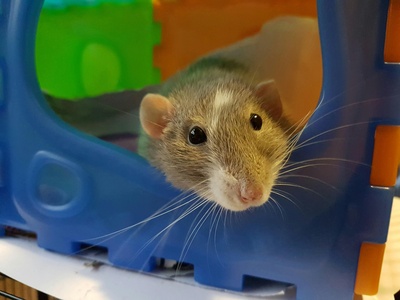
Black Rat
An invasive species found worldwide. A skilled climber, often nesting in roofs and trees, with a slender body and a tail longer than its head and body combined.
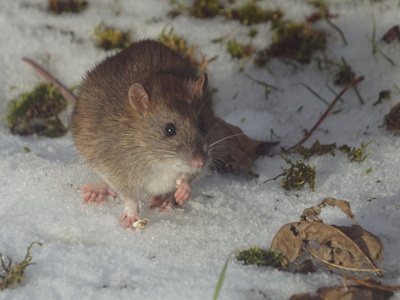
Brown Rat
A larger, more robust invasive rat, often found at ground level, especially in sewers and burrows. It is a major pest and threat to native island wildlife.
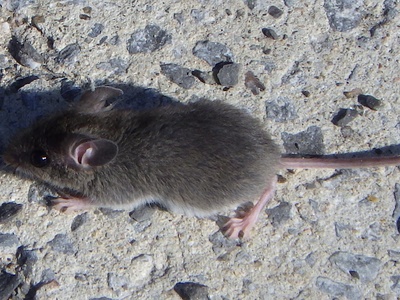
House Mouse
A small, adaptable rodent that lives in close association with humans. Its presence is often detected by droppings or gnawed materials rather than by direct sightings.

Red-rumped Agouti
A large, hoofed rodent with coarse, glossy fur and a distinctive reddish-orange rump. Introduced for food, it is often seen foraging on the forest floor during the day.
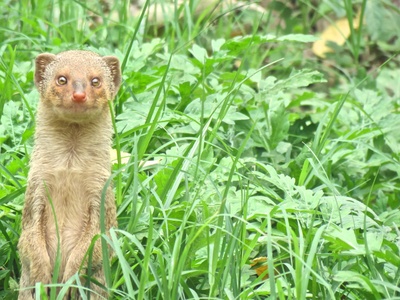
Small Indian Mongoose
A slender, weasel-like carnivore introduced to control rats. Diurnal and fast-moving, it is now a major threat to native ground-nesting birds, reptiles, and amphibians.
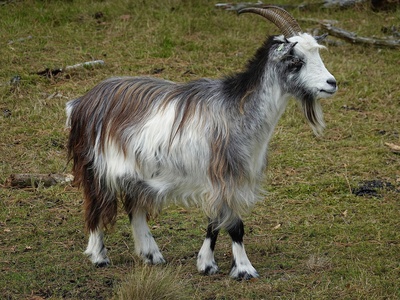
Feral Goat
Domestic goats that have established wild populations. They are highly adaptable browsers, and their overgrazing can cause significant damage to native vegetation and lead to soil erosion.

Feral Donkey
Wild donkeys, descendants of domestic work animals, are a common sight, particularly in Barbuda. They are hardy herbivores that can survive in arid conditions.
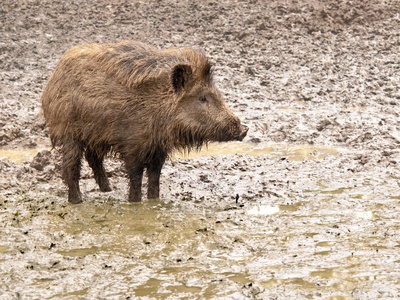
Wild Boar
Feral pigs descended from domestic stock. They are highly destructive omnivores, using their snouts to root up soil in search of food, damaging ecosystems and crops.
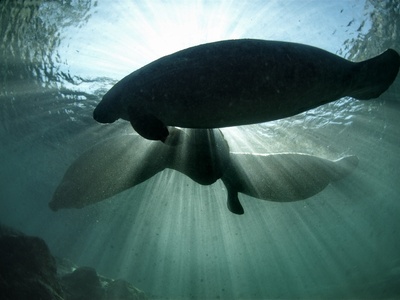
West Indian Manatee
This large, slow-moving aquatic herbivore is now considered locally extinct, but occasional vagrants from other populations may appear. Any sighting is extremely rare and significant.
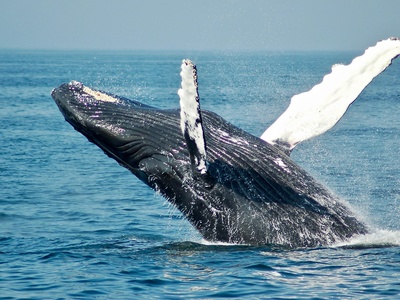
Humpback Whale
Famous for its acrobatic breaches and complex songs. These whales migrate to the area from December to May to breed and calve, offering excellent whale-watching opportunities.

Sperm Whale
The largest toothed whale, recognizable by its huge, blocky head. It inhabits deep offshore waters to hunt for giant squid. Sightings are possible on deep-water marine excursions.
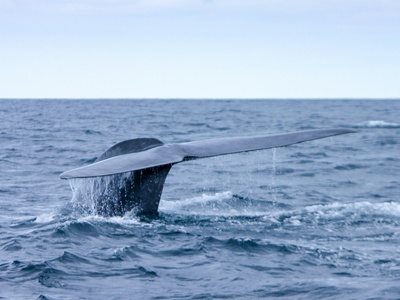
Bryde’s Whale
A medium-sized baleen whale that often feeds near the surface. It can be distinguished by three prominent ridges on its head, unlike the single ridge of similar-looking whales.

Common Bottlenose Dolphin
A highly intelligent and social dolphin, frequently seen on boat tours. They are curious and often approach vessels to bow-ride, making them one of the most commonly sighted cetaceans.
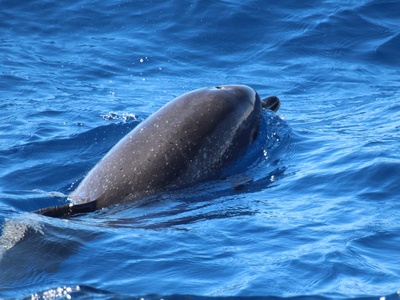
Atlantic Spotted Dolphin
A slender, fast-moving dolphin known for the dark spots that develop with age (calves are unspotted). They are highly social and often seen in large, energetic groups.

Spinner Dolphin
Famous for its acrobatic displays, leaping from the water and spinning multiple times in the air. They typically rest in shallower bays during the day and feed far offshore at night.
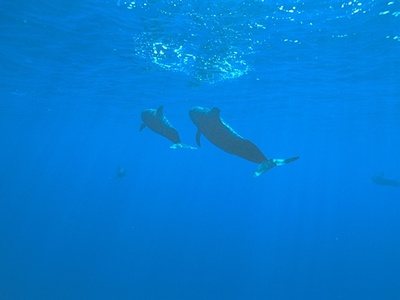
Short-finned Pilot Whale
A large, dark-colored dolphin with a distinctively bulbous head. They are highly social, living in stable family pods, and are often seen logging (resting motionless) at the surface.
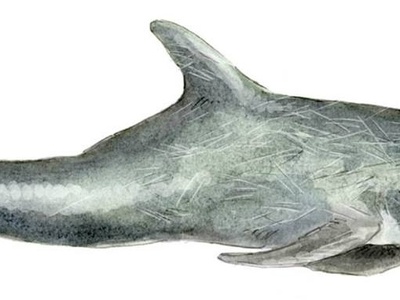
Risso’s Dolphin
A robust dolphin recognized by its heavily scarred, pale grey body, which becomes whiter with age. It primarily feeds on squid and prefers deep, offshore habitats.
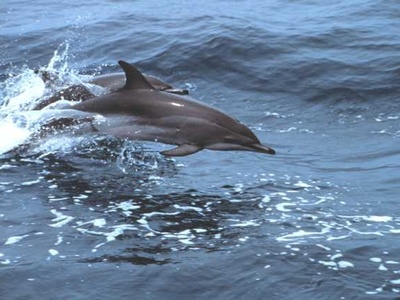
Clymene Dolphin
A fast-swimming dolphin with a distinct three-part color pattern and a short beak. It is a hybrid-origin species, often seen in large groups in deep water far from shore.
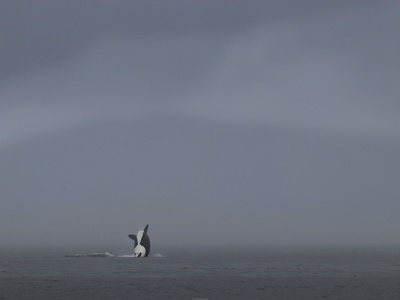
Orca
Also known as the killer whale, this is the largest dolphin species. While they have a global distribution, they are rare, transient visitors to the waters of Antigua and Barbuda.


